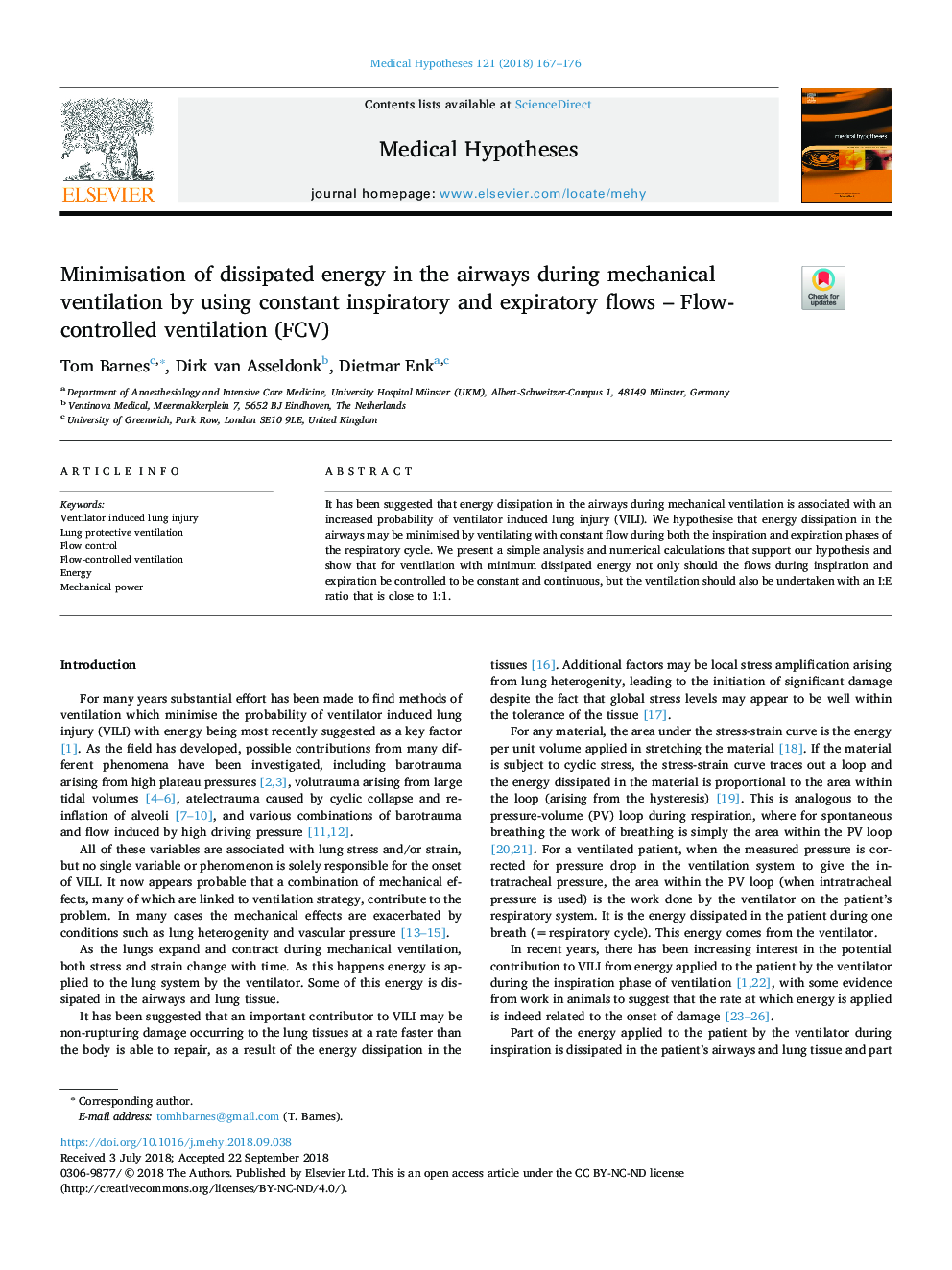| Article ID | Journal | Published Year | Pages | File Type |
|---|---|---|---|---|
| 11025794 | Medical Hypotheses | 2018 | 10 Pages |
Abstract
It has been suggested that energy dissipation in the airways during mechanical ventilation is associated with an increased probability of ventilator induced lung injury (VILI). We hypothesise that energy dissipation in the airways may be minimised by ventilating with constant flow during both the inspiration and expiration phases of the respiratory cycle. We present a simple analysis and numerical calculations that support our hypothesis and show that for ventilation with minimum dissipated energy not only should the flows during inspiration and expiration be controlled to be constant and continuous, but the ventilation should also be undertaken with an I:E ratio that is close to 1:1.
Keywords
Related Topics
Life Sciences
Biochemistry, Genetics and Molecular Biology
Developmental Biology
Authors
Tom Barnes, Dirk van Asseldonk, Dietmar Enk,
